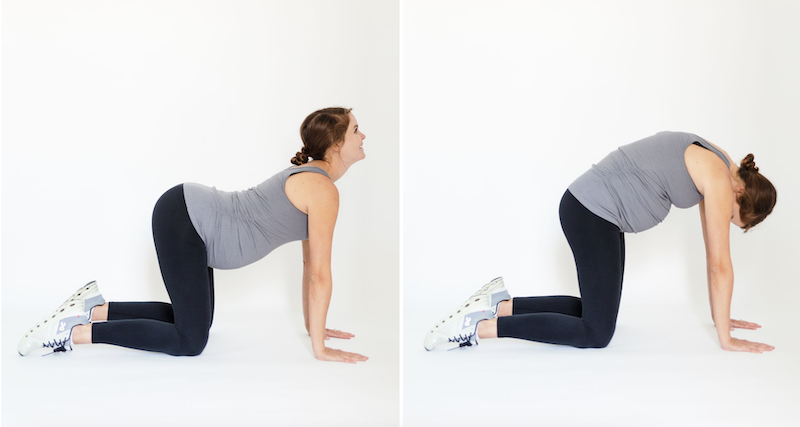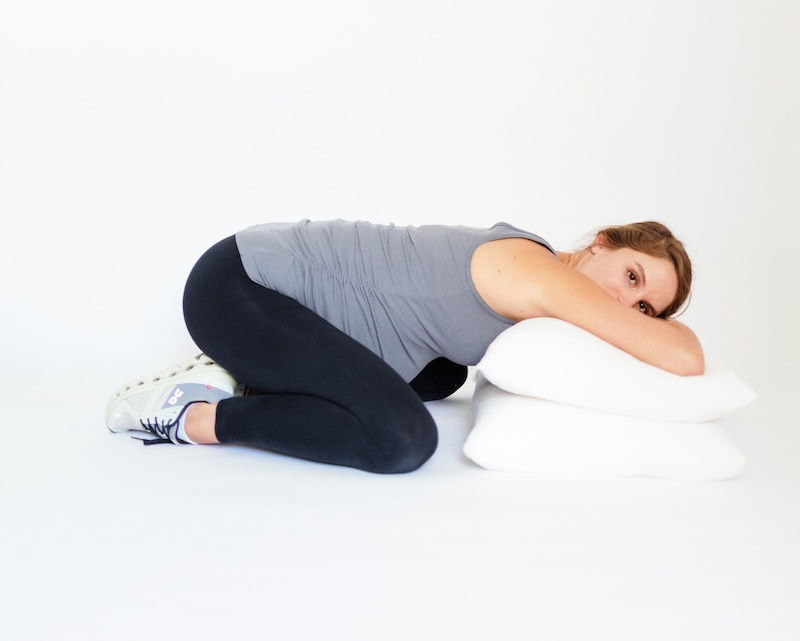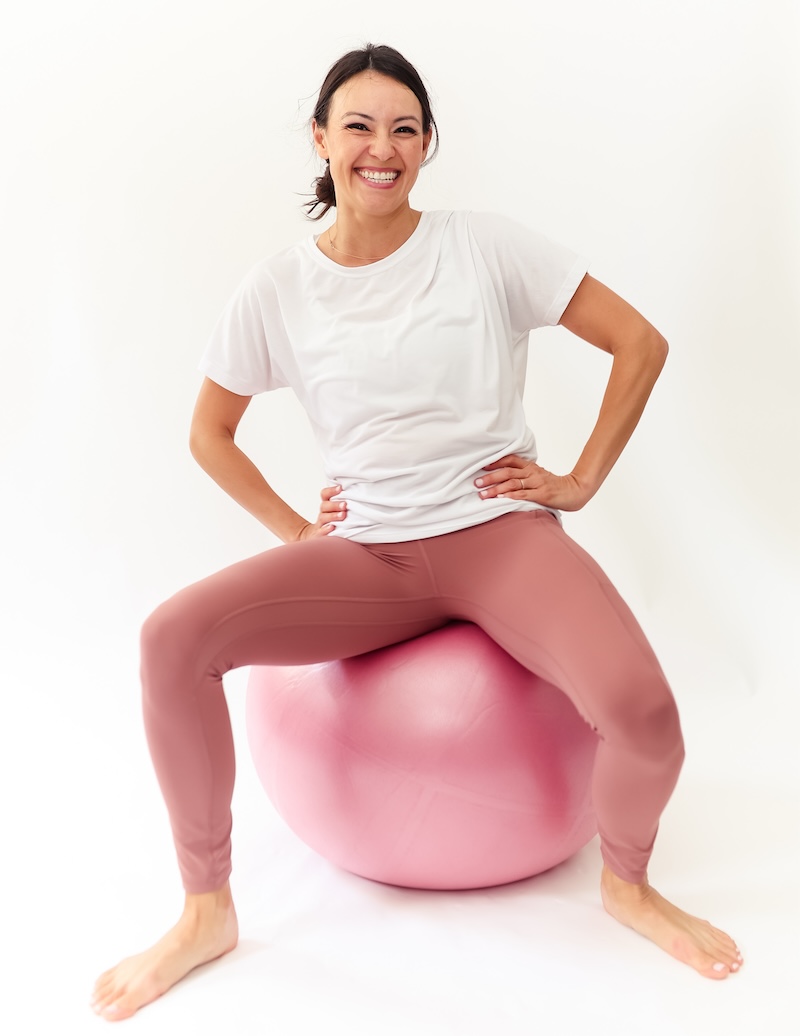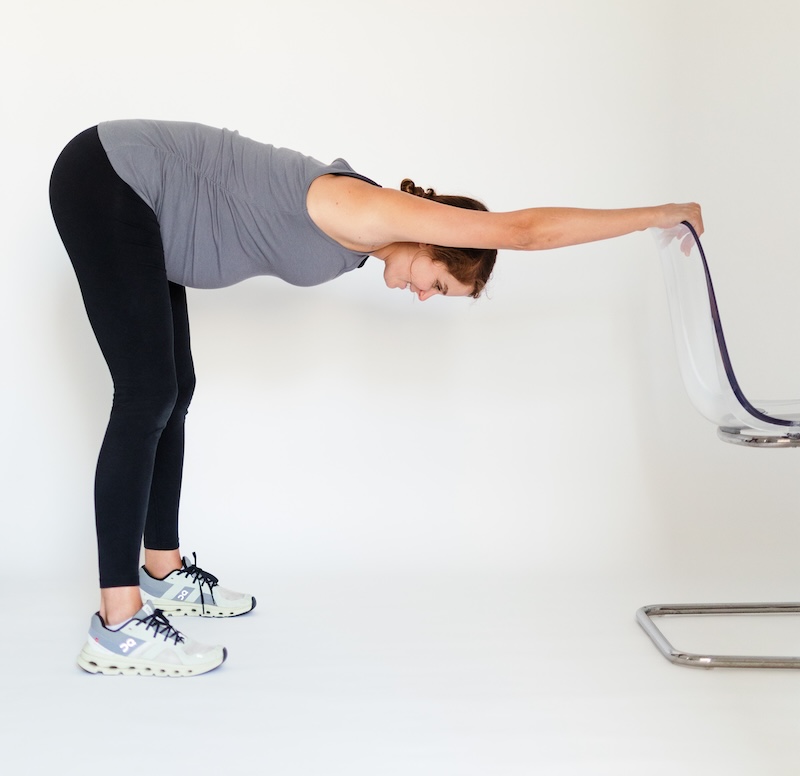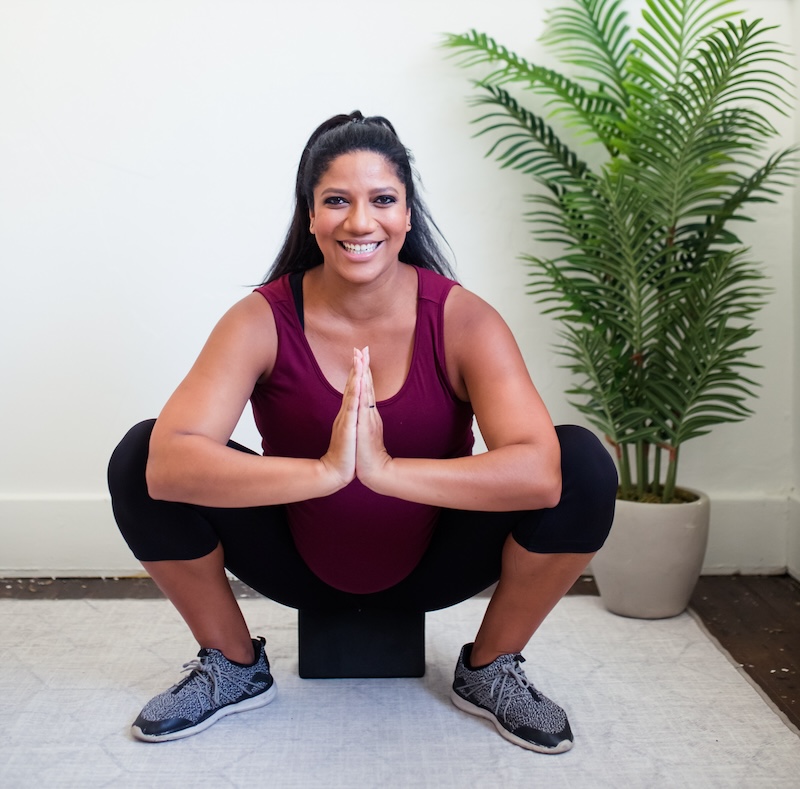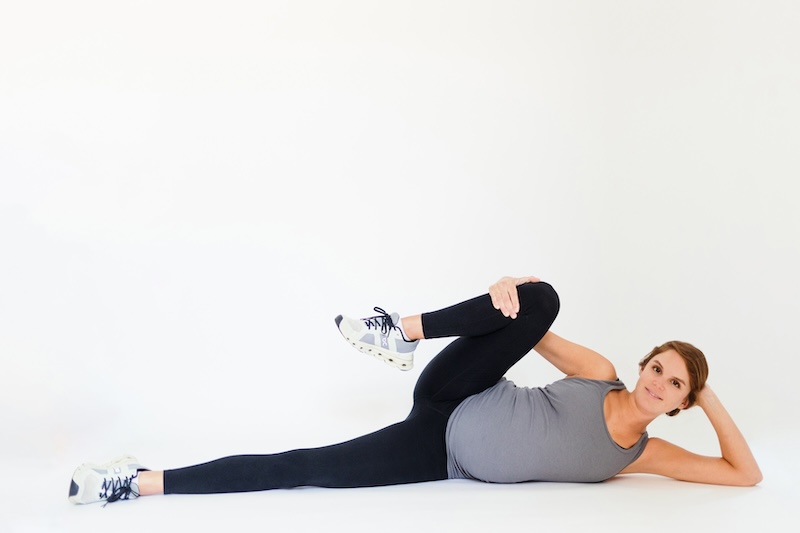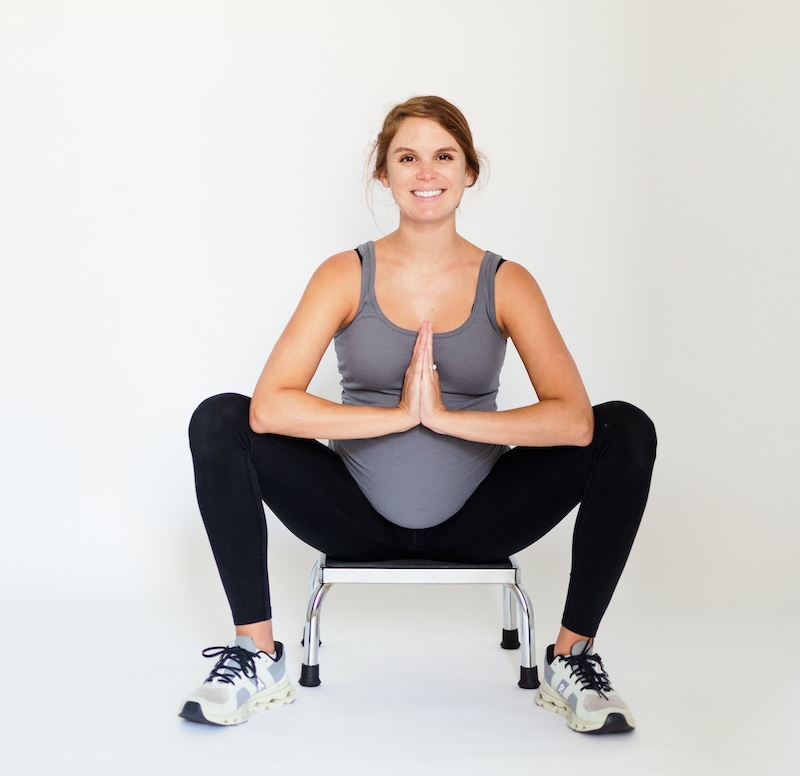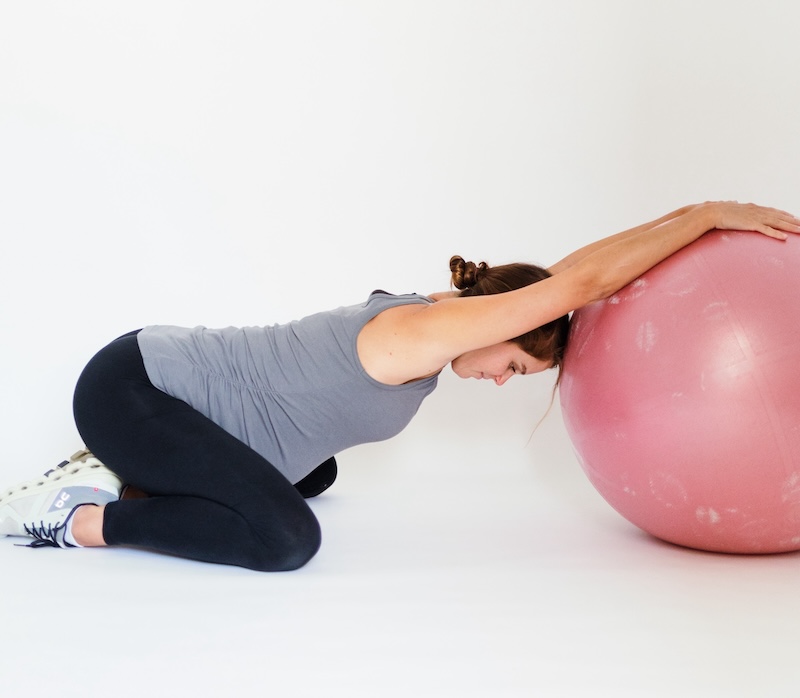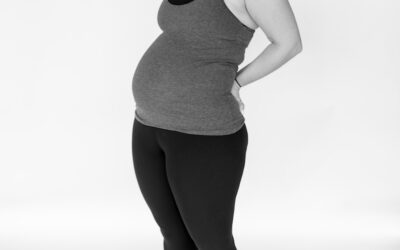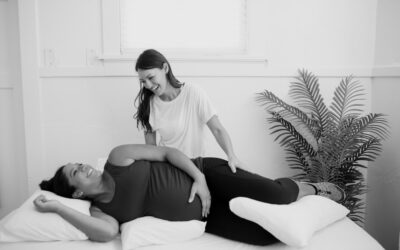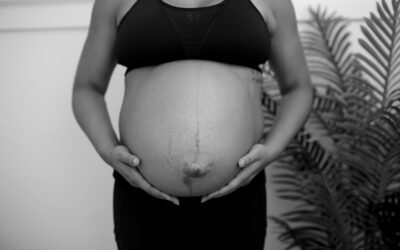I know, I know – the last thing on your mind when you’re feeling ready to pop is probably stretches for labor and delivery. But, doing stretches for labor is super beneficial for your body during pregnancy. And no, it’s not all kegel exercises!
Stretching helps improve blood flow, helps reduce lower back pain, neck stiffness and leg cramps, and can improve your flexibility and range of motion!
It also keeps your muscles in good condition, especially those related to your posture. These include your back and abdominal muscles.
Some of the most recommended stretches to prepare for labor include:
- Cat-cow pose
- Child’s pose
- Hip circles
- Modified downward facing dog
- Deep squat
- Knee to chest stretch
- Butterfly stretch
These stretches are great for loosening tight muscles, decreasing pelvic floor tension, reducing discomfort and improving pelvic mobility.
All of these stretches also put the pelvic floor and girdle muscles in a lengthened position, which can help decrease tension in preparation for vaginal birth. Your pelvic floor muscles do not push your baby out; your uterus does. We just want your pelvic floor muscle to relax, lengthen, and essentially get out of the way to come on down the birth canal.
These stretches are also commonly performed to help other pelvic floor challenges, such as painful sex, incomplete bladder emptying, or straining during bowel movements. They help release pelvic floor tension in preparation for vaginal birth.
When should you start doing stretches for labor?
You can start preparing as soon as the end of your second trimester.
This is when the ligaments and muscles in your body are most flexible, and when they will have the most significant potential for growth. It is also when the baby has grown to a size where you can start preparing your body for labor and delivery.
Stretching for labor can help create more space in the pelvis and increase your range of motion. It also helps to prepare your body for the physical demands of labor and delivery. Regular stretching can help reduce stress and tension in the hips, lower back, and other parts of the body.
Below are some stretches preggo mamas can do in the third trimester to help decrease discomfort and prep for delivery!
Stretches for Labor Preparation
I love these poses for stretching the back and hips and to prepare your pelvis for birth.
#1 Cat-Cow
Start in the hands & knees position. Keep your hands shoulder-width apart and your knees directly below your hips.
Inhale deeply and curve your lower back, bringing your head up and performing a pelvic tilt. Exhale deeply and bring your abdomen in, arching your spine and bringing your head and pelvis down. Repeat the stretch.
Cat cow is one of the most common yoga poses which help to loosen the spine and improve posture. This stretches the back muscles, abdomen and chest.
#2 Child’s pose
In hands and knees position, bring toes together and separate knees wider than your hips. Stretch arms forward and rock your bottom back to rest on heels. Rest forehead down on the mat and take 5 deep breaths.
Child’s pose is an excellent stretch for pregnant women due to its gentle, low-impact nature. This pose helps maintain flexibility in the hips, back, and shoulders, which are vital areas to stretch during pregnancy. It also helps reduce lower back pain and ease tension in the abdomen. It also promotes deeper breathing, which is essential for relaxation and overall well-being.
#3 Hip circles on birth ball
Sitting on a birth or exercise ball, circle your hips in a clockwise motion like you’re hula hooping 10x. Switch to counterclockwise 10x.
Hip circles are a great way to help ease tightness from increased pregnancy hormones, weight gain and posture changes. They increase flexibility in the hips and lower back. This can help reduce pain during pregnancy due to the extra strain on these areas.
Hip circles encourage baby to get into an optimal position for delivery.
During labor, the extra stretching can help to open the pelvis, making it easier for the baby to pass through.
#4 (Modified) downward facing dog
Place your feet shoulder width apart. Next, keeping your legs straight, walk your hands down the wall until you feel a gentle stretch on the back of your thighs and shoulder. Hold this position for several breaths.
This modification of downward-facing dog is excellent for opening up your chest. It is great if you have low back pain and want to decrease hip tightness.
This stretch is perfect first thing in the morning or after sitting for a long time. It’s also helpful during labor contractions.
#5 Deep squat
Begin by standing with feet hip width apart and toes pointed slightly out.
Slowly bend your knees and push your bottom back, as if you’re about to sit on the floor. As you squat, put your elbows on the inside of your thigh muscles, press your palms together, and imagine pulling your belly button toward your spine. Keep your chest lifted and your back straight. Make sure to keep the knees in line with your toes, and avoid letting them roll inward or out.
Hold the pose for five slow breaths, then slowly rise.
This is my favorite! A deep squat will stretch the hips, relax the pelvic floor muscles and prepare the perineum for birth. This stretch also helps lengthen the pelvic floor muscles, which helps the baby drop down.
It also helps open up your hip joints to decrease discomfort. It also helps stretch the vaginal opening tissues to prepare for a vaginal delivery. You should feel the stretch in your inner thighs.
Deep Squat Alternatives
If you have pubic bone pain or pubic symphysis pain (SPD) deep squats are NOT recommended. Some women have pubic bone pain (SPD), sacroiliac joint dysfunction or have tight hips. If this is you, a deep squat is likely too deep.
These alternatives are great options to lengthen and relax your pelvic floor muscles. They are great to stretch the perineum for childbirth preparation. If you have pain, peeing or pooping issues, consider alternatives to the deep squat stretch. Sit on your hands and knees to relax before starting.
#1 Side Knee to Chest
Lie on your side with your lower leg straight on the ground. Bring the upper knee to your shoulder, which lengthens and relaxes that side of your pelvic floor. Take 5 deep breaths.
#2 Supported Deep Squat
Place a block in between your feet and stand with feet wider than hip distance and toes pointed slightly out. Squat all the way down, raising heels off the ground if needed. Hold for 5 deep breaths.
#3 Child’s Pose on Birth Ball
In hands and knees position, bring toes together and separate knees wider than your hips. Stretch arms forward onto the birth ball and rock your bottom back to rest on heels. Rest forehead down on the mat and take 5 deep breaths.
Stretches are great, but remember, exercise and massage during pregnancy are recommended, too! Always check with your doctor or midwife before starting any exercise routine.
Ready to take your childbirth preparation to the next level?
Join the V-Hive Membership for access to the comprehensive Childbirth Prep Program. This program offers daily stretches specifically designed to help you prepare your pelvic floor for pregnancy and labor. With guided exercises and expert advice, you’ll feel more confident and ready for labor and delivery. Sign up today and empower yourself with the tools and knowledge to support a smoother, more comfortable birthing experience.


